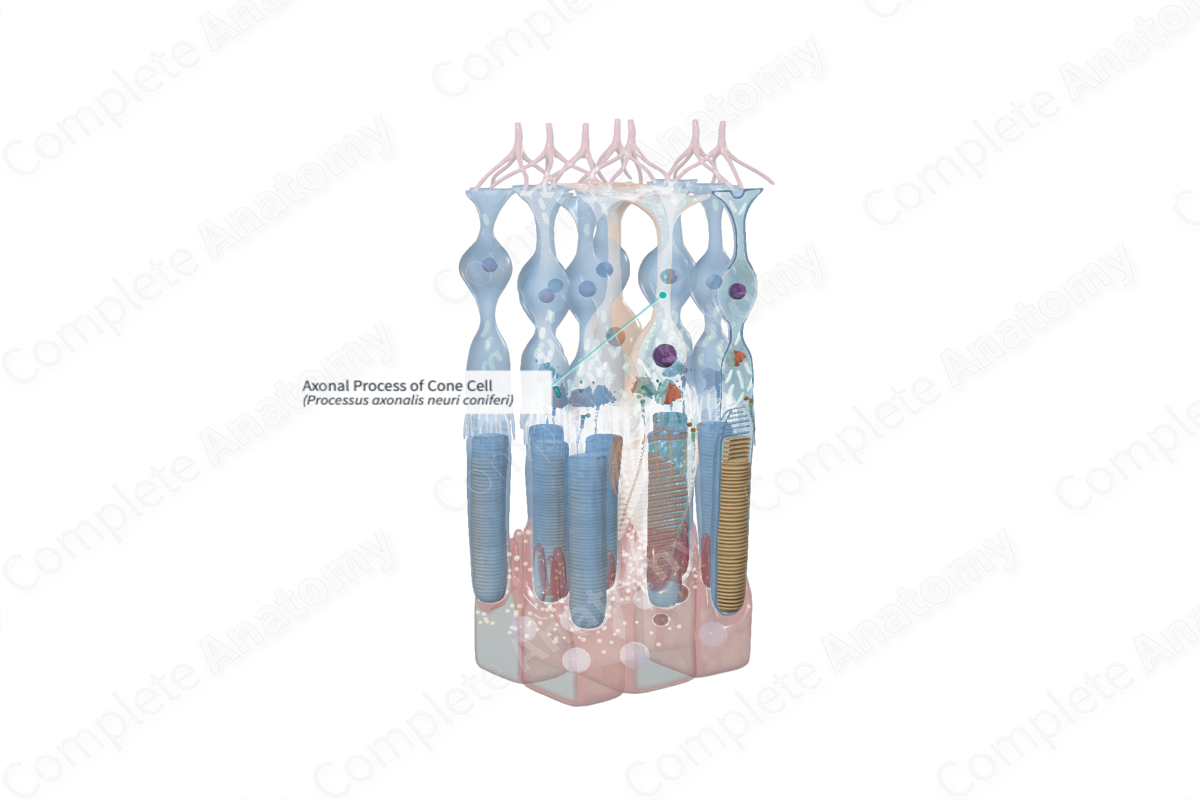
Quick Facts
An axonal process is the process of a neuron by which impulses travel away from the cell body; at the terminal arborization of the axon, the impulses are transmitted to other nerve cells or to effector organs (Dorland, 2011).
Structure and/or Key Features
The axonal process is the elongated part of the photoreceptor cell that carries membrane potential changes from the soma (or cell body) to other photoreceptor, bipolar, or horizontal cells. Cone axons have a diameter of approximately 1–2 µm and are interspersed between the somas and axonal processes of rod cells.
The length of the axonal process in cone cells varies greatly depending on the species and location within the retina. In primates, cones in the fovea have axonal process as long as 400–600 µm (Besharse and Bok, 2011).
Anatomical Relations
The axonal process of a cone extends from the outer nuclear layer, winds between the cell bodies and axonal processes of other photoreceptors and the external processes of glial cells, to reach the outer plexiform layer of the retina.
Function
The axonal process carries the electrical manifestation of visual stimulation, in the form of a membrane voltage change, from the soma (cell body) to the synaptic terminal.
References
Besharse, J. and Bok, D. (2011) The Retina and Its Disorders. Elsevier Science, p. 156-162.
Chen, J. and Sampath, A. (2012) 'Structure and Function of Rod and Cone Photoreceptors', Retina Fifth Edition, 1, pp. 342-359.
Dorland, W. (2011) Dorland's Illustrated Medical Dictionary. 32nd edn. Philadelphia, USA: Elsevier Saunders.

